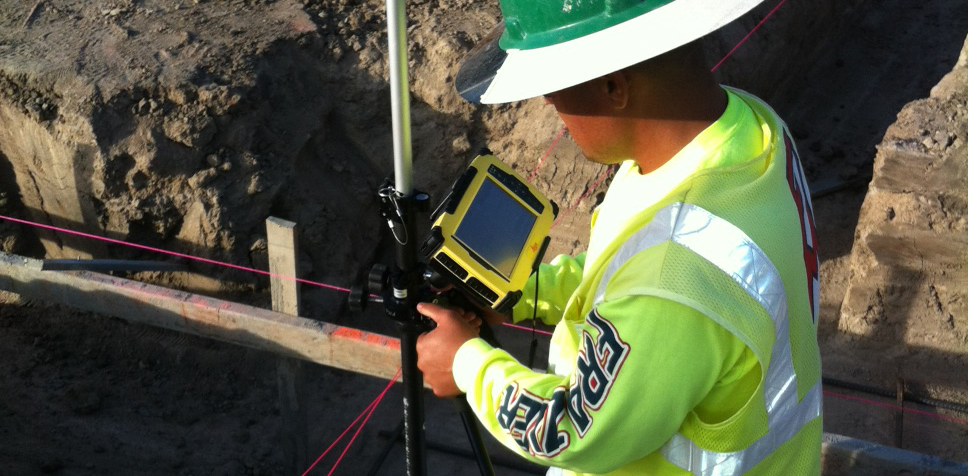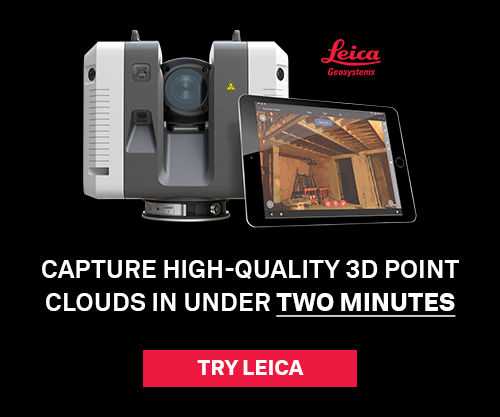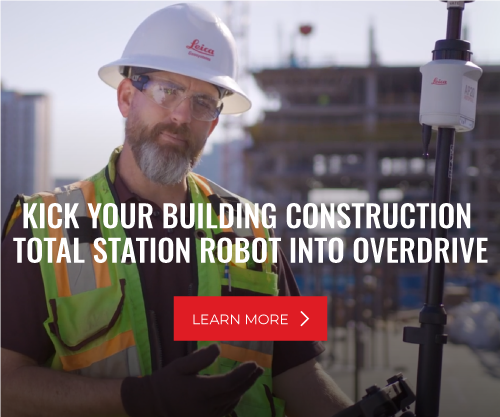In early 2012, Frazier of Lancaster, Calif., became one of the first multistate concrete companies to adopt robotic total station technology for standard layout tasks. “It’s our policy to be progressive—we used laser screeds early on, for example,” explains Vice President of Concrete Mike Prascsak. “We make that part of our presentations and interviews when preparing bids. Now, when we explain that we’re using the same tools as surveyors to set out points, and that we can even reset lost points if needed, contractors are amazed.”
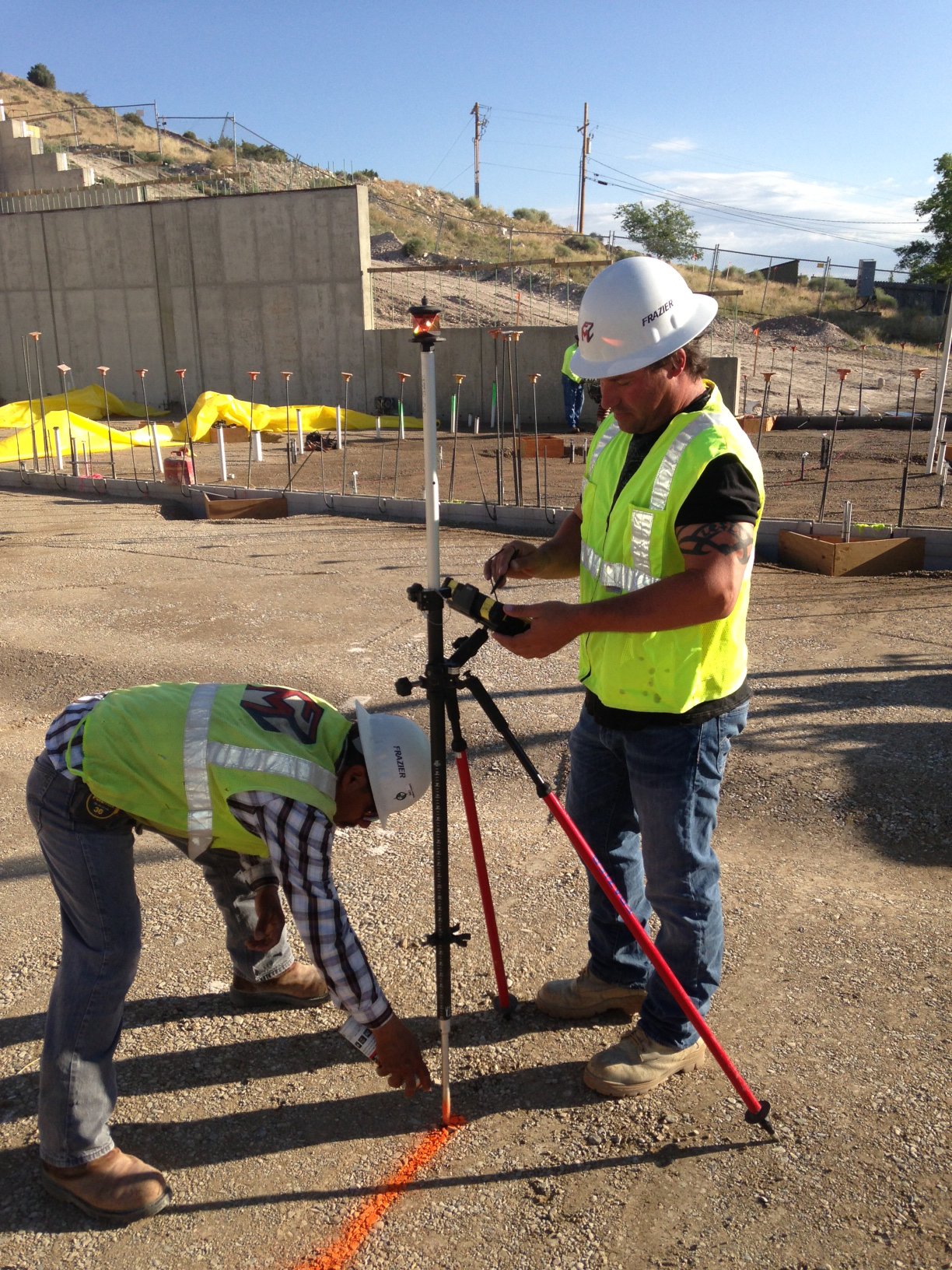
Going robotic wasn’t a casual decision. In fact, since only about 10 percent of concrete subcontractors are using total stations of any kind for layout—as opposed to the use of stringlines, tapes, etc.—Frazier’s leap to a robotic instrument (i.e., one that allows a single operator to control the total station from the prism by radio or Bluetooth) was groundbreaking. “We started by reading a lot of magazine articles, then we attended World of Concrete to actually look at different solutions,” explains Vice President of Operations Lonnie Herrell, who was the first to push for robotic instrumentation at Frazier. “Then we arranged for demonstrations from five companies. Finally, we narrowed our options down to two systems and had both companies do work on actual job sites—we programmed in actual project data, and did layout work with salesman present.”
At the end of this rigorous selection process, Frazier selected the iCON (Intelligent CONstruction) system from Leica Geosystems. The iCON system is a suite of interoperable hardware and software designed to work together smoothly and to simplify construction layout. The major components are the Leica robot 50 robotic total station, controlled by a rodman using a Leica iCON CC61 tablet PC. Both components are ruggedized for construction work, but they are still sensitive, highly sophisticated survey instruments. “We felt they had the right system for our particular requirements,” says Herrell, “and we were also impressed by Leica’s responsiveness and the training arrangements.”
A Clear Return on Investment
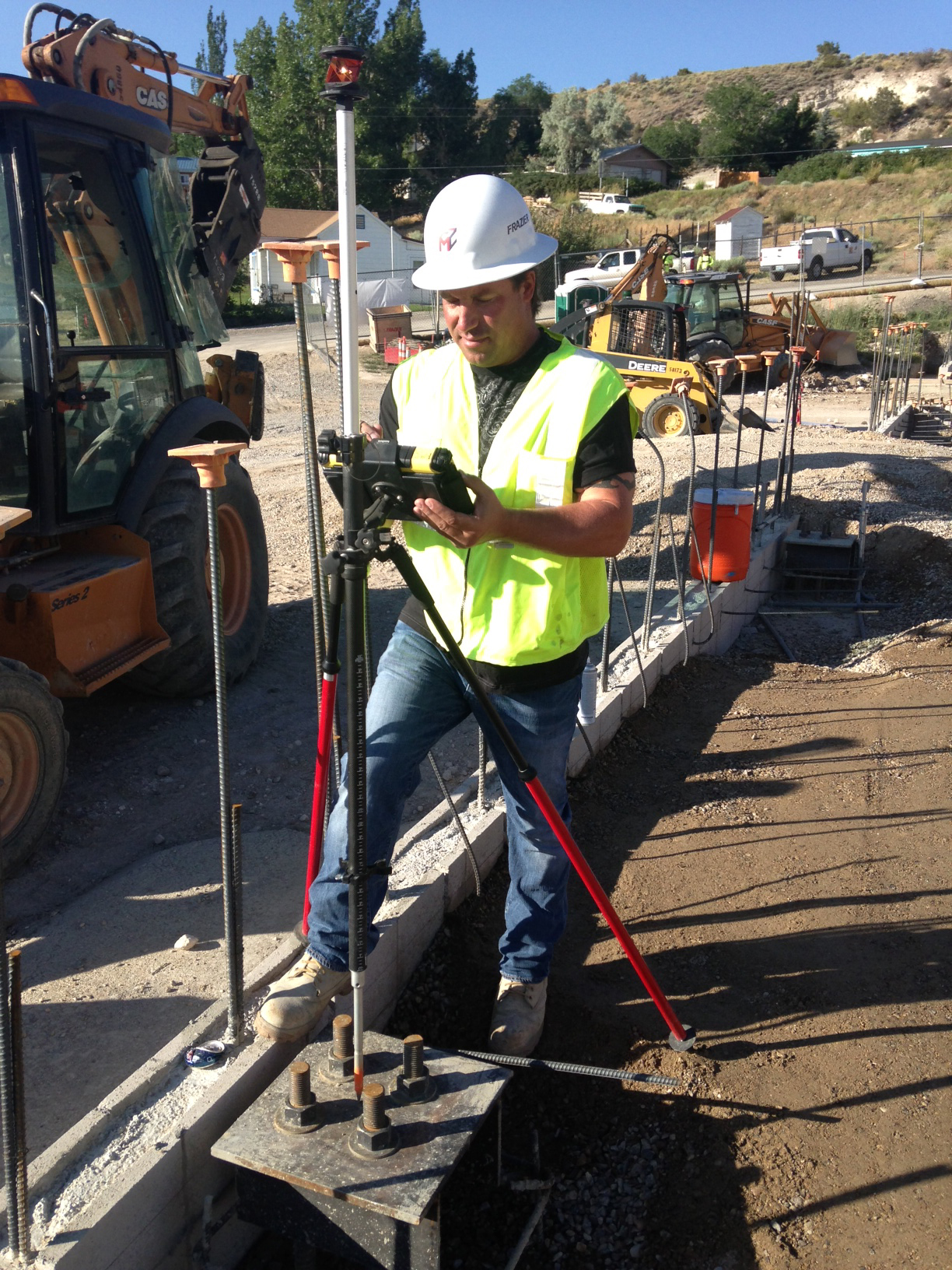
This way of working offers many advantages, compared to stringlines and tape measures. The most obvious, of course, is the fact that most layout work can be done faster, and with one man, rather than a two-man crew. “On one of our most recent projects, a 30,000 square foot building, we had a total of 1,027 points to set—that includes footing edges, pier locations, bolt locations… everything—and one man, working with the robot, was able to do the work in two days,” says Prascsak. “With our previous methods, that would have taken three days, with a two-man crew. Especially on large buildings, there’s a very clear return on investment.”
Another advantage, and one that’s not so obvious, is the connectivity provided by the tablet PC, which includes a 3G cellular modem. Frazier has one CAD operator, Jason Karpynec, working out of the Lancaster, California office, who can do all the calculations needed on all ongoing projects, and email points as needed for upload into the tablet. He can even respond to requests from the field that need a quick turnaround; “On occasion, we find errors in plans when we do our initial checks in the field,” Prascsak explains. “And when that happens, we can call Jason and, usually within an hour, he can do the calcs and send us the points we need.”
Prascsak also appreciates the independence provided by the new equipment. “Before, if a control point had been knocked out by equipment or something, we were basically stuck until we could get surveyors to come out. Now, we can almost always reset it ourselves—it makes a big difference, and we avoid a lot of wasted time.”
RELATED: How to Bridge the Gaps in BIM
Herrell tells another story that emphasizes the importance of being able to check the work of others. “The Azusa waste management facility was a huge metal building, with more than 150 large bolt clusters to set,” he says. Working alone, Herrell set out the bolt locations and then, because bolt location was so critical, the prime contractor hired a surveyor to check the work… and that surveyor found that bolt locations were off by a potentially devastating inch and a half. “In the past,” says Herrell, “we would have just accepted that we’d made a mistake. But with this technology available, I decided to look a little closer.” It was a good thing he did; close examination of the layout and plans revealed that a critical dimension update had not been conveyed to the surveyor. If Frazier had simply made changes based on the survey work, they would have perpetuated a serious error that could have had serious ramifications late in the project. Checking with the robot helped them to avoid very costly rework.
Opportunities for Expansion
Additional advantages are real, but subtler. For example, Prascsak says that because layout is more accurate, final results are better too; “We’ve always done very accurate work, so it’s not a dramatic improvement,” he says. “But, at the end of the day, if our floors are even a little flatter, that’s a very good thing.” And, use of the robotic instrument is leveraging Frazier’s previous investments in 3D CAD modeling, and may eventually lead to new services—“We keep learning how to do more with the system,” says Prascsak, “and that may enable us to do new kinds of work, like machine control.”
Currently, Frazier has several employees trained to use the equipment, and two systems are constantly on the move from project to project. “It seems like, after the initial training, getting out and using the system is the best way to learn, and we’ve also found that we can’t be away from it too long—you have to keep crews using it consistently to get the most out of it,” Herrell says. “But when we do use it consistently, we find new ways to do things that are faster and more accurate.”
Prascsak says that he expects more concrete contractors to adopt survey instruments. “I think this is where the industry is going, and I wanted us to be in the lead, not catching up,” he says. “For us, the return on investment has been very clear, and having the capacity to do our own survey work has already made a big difference in our estimates and in winning bids.”
He’s probably right; as vendors like Leica Geosystems adapt sophisticated location technology for the needs of concrete contractors and other ‘hands on’ professions, the appearance of robotic total stations on job sites is likely to become more common. And Frazier is happy to be in the lead.



